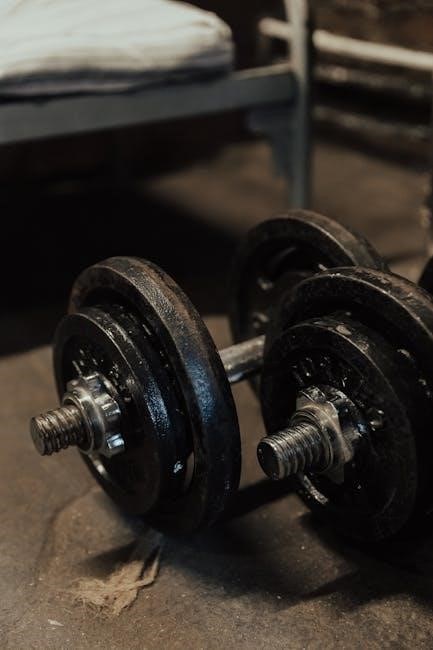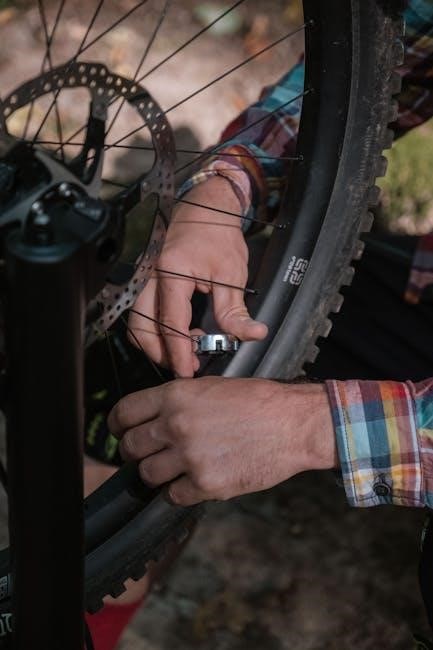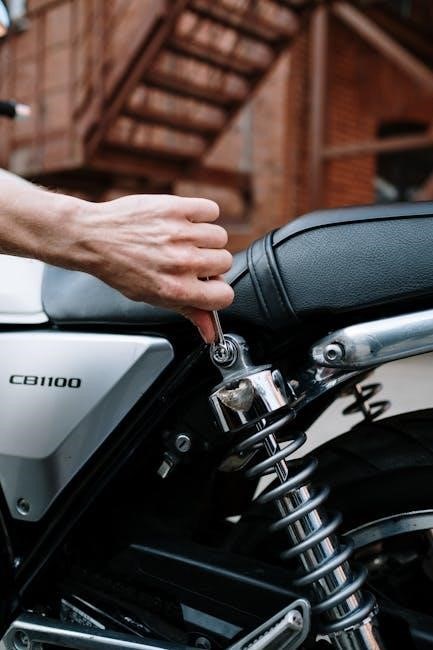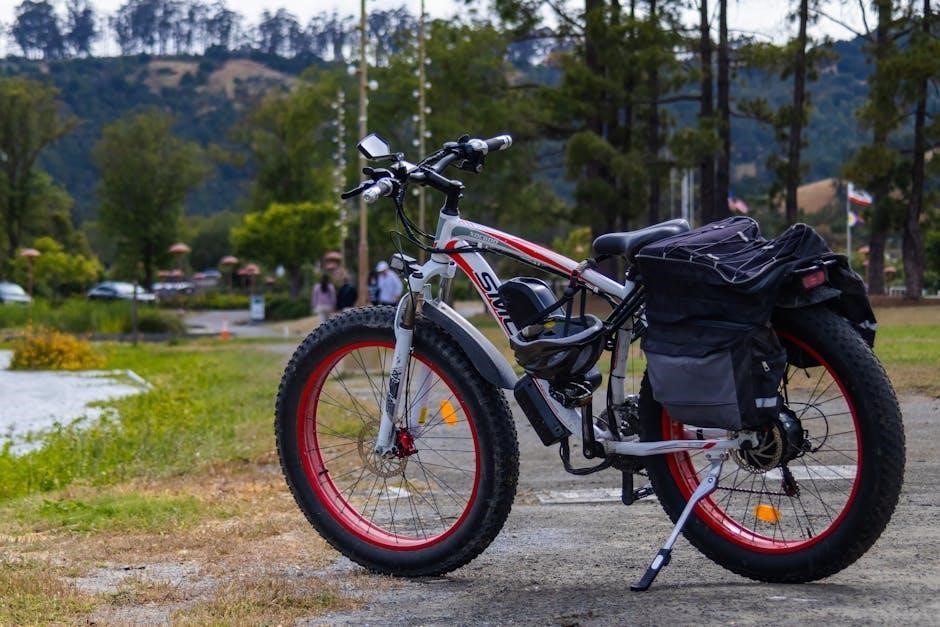2013 honda fit manual
The 2013 Honda Fit manual provides essential guidance for optimizing performance‚ safety‚ and maintenance. It covers key features like fuel efficiency‚ engine options‚ and interior versatility‚ ensuring a smooth driving experience.
1.1 Overview of the 2013 Honda Fit
The 2013 Honda Fit is a compact car known for its reliability‚ fuel efficiency‚ and versatility. It features a 1.5L engine‚ available in automatic or manual transmission‚ delivering excellent economy and performance. The interior boasts ample space‚ with foldable rear seats offering exceptional cargo capacity. Its lightweight design and responsive handling make it ideal for city driving. Owners praise its visibility‚ practicality‚ and durability‚ making it a top choice for small car enthusiasts. The Fit also includes standard safety features like airbags and electronic stability control‚ ensuring a secure driving experience. Its reputation for longevity and low maintenance costs further enhances its appeal.
1.2 Importance of the Owner’s Manual
The owner’s manual is a vital resource for understanding and maintaining the 2013 Honda Fit. It provides detailed information about the vehicle’s features‚ operation‚ and maintenance requirements. By following the manual‚ owners can optimize performance‚ ensure safety‚ and extend the lifespan of their car. It also offers troubleshooting guides for common issues‚ such as resetting the clock or addressing dashboard warnings. The manual is tailored to cover all models‚ though some features may not apply to every trim. Regularly referencing the manual helps drivers make informed decisions‚ prevent potential problems‚ and enjoy a smoother‚ more efficient driving experience. It’s an essential tool for both new and experienced owners.

Key Features of the 2013 Honda Fit
The 2013 Honda Fit features a 1;5L engine‚ automatic or manual transmission‚ excellent fuel efficiency‚ and a versatile interior‚ making it a reliable and practical choice.
2.1 Engine and Transmission Options
The 2013 Honda Fit is equipped with a 1;5-liter inline-4 engine‚ delivering 117 horsepower and 106 lb-ft of torque. It offers a choice between a 5-speed manual transmission and an optional automatic transmission. The manual transmission provides precise control and sporty driving dynamics‚ while the automatic offers smooth‚ seamless gear shifts for a more relaxed experience. Both options are designed for fuel efficiency‚ with the automatic achieving an EPA rating of 28 MPG in the city and 35 MPG on the highway‚ and the manual slightly lower at 27 MPG city and 33 MPG highway. This versatility ensures the Fit meets various driving preferences and needs‚ balancing performance and economy effectively.
2.2 Fuel Efficiency and Economy
The 2013 Honda Fit is known for its excellent fuel efficiency‚ making it a cost-effective choice for daily commuting and long drives. With its 1.5-liter engine‚ the Fit achieves an EPA rating of 28 MPG in the city and 35 MPG on the highway for the automatic transmission‚ while the manual transmission offers slightly lower ratings at 27 MPG city and 33 MPG highway. The Fit’s compact design and lightweight construction contribute to its impressive fuel economy. Additionally‚ features like the Eco Assist system help drivers optimize their fuel efficiency by adjusting throttle response. Regular maintenance‚ such as oil changes and tire pressure checks‚ can further enhance its economy‚ ensuring the Fit remains a practical and economical vehicle for years to come.
2.3 Interior and Cargo Space
The 2013 Honda Fit offers a surprisingly spacious and versatile interior‚ making it ideal for both daily commutes and cargo-heavy tasks. The Fit’s Magic Seat system allows for multiple configurations‚ including folding the rear seats to create a flat cargo area. With the seats up‚ the Fit provides 20.6 cubic feet of cargo space‚ expanding to 41.9 cubic feet when the seats are folded. The interior also features convenient storage compartments and cup holders‚ enhancing practicality. Visibility is excellent‚ with large windows providing a clear view of the surroundings; Whether carrying groceries‚ luggage‚ or even a bike‚ the Fit’s interior and cargo space adapt to meet various needs‚ showcasing its versatility and functionality.
Safety Features and Precautions
The 2013 Honda Fit features multiple airbags‚ anti-lock braking‚ and electronic stability control for enhanced safety. Regular maintenance ensures optimal performance and passenger protection.
3.1 Airbags and Passive Safety Systems
The 2013 Honda Fit is equipped with a comprehensive airbag system‚ including dual front airbags‚ front side airbags‚ and side curtain airbags for enhanced occupant protection. These airbags deploy during severe collisions to cushion impact and reduce injury risk. The vehicle also features advanced crash sensors to ensure proper airbag activation. Additionally‚ the Fit includes passive safety features like the ACE (Advanced Compatibility Engineering) body structure‚ which absorbs and distributes collision forces to minimize damage to the passenger compartment. Proper seat belt use is essential for maximum protection‚ as airbags are designed to work in conjunction with restraints. Always ensure the front passenger airbag is not deactivated when a child is present.
3.2 Seat Belts and Proper Usage
The 2013 Honda Fit is equipped with a three-point seat belt system for all passengers‚ designed to provide optimal restraint during sudden stops or collisions. Proper seat belt usage is crucial for safety‚ as it helps prevent ejection and reduces injury risk. Always ensure the shoulder belt is worn correctly across the chest‚ and the lap belt is snug over the hips. Avoid wearing the belt too loose or twisted‚ as this can compromise its effectiveness. Additionally‚ never share a seat belt with another passenger‚ and ensure all occupants are buckled up before driving. Regularly inspect the belts for damage or wear‚ and replace them if necessary. Neglecting to wear a seat belt can significantly increase the risk of injury or death in an accident.
3.4 Safety Tips for Driving
Safe driving practices are essential for minimizing risks on the road. Always maintain a safe distance from other vehicles‚ as this allows ample time to react to sudden situations. Avoid distractions like using a phone or eating while driving‚ as they can impair your focus. Ensure all passengers are properly secured with seat belts before starting the journey. Be mindful of speed limits and adjust your driving according to road conditions‚ especially in rain or snow. Use turn signals consistently to communicate your intentions to other drivers. Keep your eyes on the road and stay alert for pedestrians‚ bicycles‚ and unexpected obstacles. Defensive driving habits can significantly reduce the likelihood of accidents and enhance overall safety for you and others on the road.

Maintenance and Servicing
Regular maintenance ensures optimal performance and longevity of your 2013 Honda Fit. Schedule routine checks‚ fluid replacements‚ and part inspections as recommended by Honda to prevent issues.
4.1 Recommended Maintenance Schedule
The 2013 Honda Fit manual outlines a detailed maintenance schedule to ensure reliability and performance. Honda recommends servicing at specific mileage intervals‚ such as every 5‚000 to 7‚500 miles for oil changes and tire rotations. At 15‚000 miles‚ inspect the air filter‚ spark plugs‚ and belts. Every 30‚000 miles‚ replace the air filter and spark plugs‚ and check the coolant and brake fluid; Follow the schedule to prevent wear and tear‚ especially under severe driving conditions like frequent stop-and-go traffic or extreme temperatures. Regular maintenance helps maintain fuel efficiency‚ performance‚ and extends the lifespan of your vehicle.
4.2 Oil Change and Fluid Check Guidelines
The 2013 Honda Fit manual emphasizes regular oil changes to maintain engine health. Use 0W-20 synthetic oil for optimal performance. Change the oil every 5‚000 to 7‚500 miles‚ depending on driving conditions. Always warm up the engine before draining the oil‚ and replace the filter with a genuine Honda or equivalent part. Check fluid levels‚ including coolant‚ brake‚ and windshield washer fluids‚ during each service. Inspect for leaks and top off as needed. Refer to the manual for proper procedures to avoid damage. Regular fluid checks ensure smooth operation and prevent costly repairs down the road.
4.3 Spark Plug Replacement and Tune-Ups
Spark plug replacement is essential for maintaining the 2013 Honda Fit’s performance. Replace spark plugs every 30‚000 to 100‚000 miles‚ depending on driving conditions. Use genuine Honda spark plugs for optimal compatibility. When replacing‚ locate the spark plug wires‚ remove them‚ and use a spark plug socket to unscrew the plugs. Ensure the new plugs are properly gapped and tightened to avoid damage. Tune-ups should include inspecting and replacing the air filter‚ checking belts and hoses for wear‚ and ensuring the ignition system is functioning correctly. Follow the manual’s guidelines for intervals and procedures to maintain engine efficiency and prevent issues.

Instrument Panel and Warning Lights
The instrument panel displays essential driving information like speed‚ fuel level‚ and engine status. Warning lights indicate potential issues‚ such as low oil pressure or system malfunctions.
5.1 Dashboard Layout and Controls
The 2013 Honda Fit features a well-organized dashboard designed for driver convenience. The instrument cluster includes a speedometer‚ tachometer‚ fuel gauge‚ and gear shift indicator. Controls for the audio system‚ climate control‚ and cruise control are centrally located for easy access. The steering wheel houses audio and cruise control buttons‚ allowing drivers to manage functions without distractions. The dashboard also includes cup holders and storage compartments for small items‚ enhancing practicality. The layout prioritizes visibility and ease of use‚ ensuring drivers can focus on the road while maintaining control over vehicle settings. This intuitive design contributes to a comfortable and efficient driving experience.
5.2 Understanding Warning Lights and Indicators
The 2013 Honda Fit dashboard features several warning lights and indicators that alert drivers to specific conditions. The Oil Maintenance Light illuminates when the oil needs changing. The Battery Light indicates a charging system issue‚ while the Temperature Light signals overheating. The Brake Light appears if the parking brake is engaged or there’s a brake system problem. The Check Engine Light (CEL) activates for various engine-related issues. Consult the manual for detailed explanations of each light. Ignoring these warnings can lead to serious damage. Always address illuminated lights promptly to ensure vehicle safety and longevity. Regular checks and timely repairs are essential for optimal performance.

Operating the 2013 Honda Fit
Operating the 2013 Honda Fit involves smooth handling and responsive controls. Its compact design makes it easy to maneuver in tight spaces and city driving conditions.
6.1 Starting and Stopping the Engine
To start the engine in your 2013 Honda Fit‚ insert the key into the ignition‚ turn it clockwise to the “START” position‚ and release it immediately. The engine should roar to life. For models equipped with a push-button start‚ ensure the key fob is inside the vehicle‚ press the brake pedal‚ and then press the “START/STOP” button until the engine starts. To stop the engine‚ shift into park (automatic) or first gear (manual)‚ press the “START/STOP” button‚ or turn the ignition key to the “LOCK” position. Always ensure the vehicle is secure before exiting.
6.2 Transmission and Gear Shift Operation
The 2013 Honda Fit offers a smooth shifting experience with its 5-speed automatic or manual transmission. For automatic models‚ shift through Park‚ Reverse‚ Neutral‚ Drive‚ and manual mode using the gear selector. Engage the brake before shifting to ensure safety. For manual models‚ press the clutch pedal fully before shifting gears to avoid damage. Use the gearshift to move through first to fifth gears‚ ensuring the vehicle is at a suitable speed for each gear. Avoid riding the clutch to prevent wear. Always use the shift lock release to shift out of Park for added safety. Proper shifting enhances performance and longevity of the transmission.
6.3 Cruise Control and Other Convenience Features
The 2013 Honda Fit is equipped with a convenient cruise control system‚ allowing drivers to maintain a set speed on long drives. The controls are located on the steering wheel for easy access. To activate‚ press the SET button after reaching the desired speed. The system will maintain that speed until the CANCEL button is pressed or the brakes are applied. Other convenience features include power windows‚ remote keyless entry‚ and a multi-information display that provides trip data. These features enhance the overall driving experience‚ offering comfort and accessibility for both drivers and passengers.

Fuel Efficiency and Economy
The 2013 Honda Fit offers excellent fuel efficiency‚ with an EPA rating of up to 28 MPG in the city and 35 MPG on the highway. Lightweight design and aerodynamic engineering contribute to its economy‚ making it a cost-effective choice for daily driving.
7.1 Tips for Maximizing Fuel Efficiency
To maximize fuel efficiency in your 2013 Honda Fit‚ maintain proper tire pressure‚ as underinflated tires reduce MPG. Drive smoothly and avoid sudden accelerations or hard braking. Use cruise control on highways to maintain a constant speed. Remove extra weight from the vehicle‚ as lighter cars are more efficient. Avoid idling for extended periods‚ as it wastes fuel. Use the ECON button to optimize engine and transmission performance for better economy. Plan your route to minimize unnecessary driving and use air conditioning wisely‚ as it can decrease fuel efficiency. Regular maintenance‚ such as oil changes and air filter replacements‚ also helps improve fuel economy.
7.2 Understanding Fuel Consumption Ratings
The 2013 Honda Fit’s fuel consumption ratings provide insights into its efficiency. The U.S. Environmental Protection Agency (EPA) estimates for the Honda Fit include 28 MPG in the city‚ 35 MPG on the highway‚ and 31 MPG combined for the LX and Sport trims with automatic transmission. Manual transmission models achieve slightly higher ratings. These ratings help drivers anticipate fuel costs and compare vehicles. Actual mileage may vary based on driving habits‚ road conditions‚ and maintenance. Understanding these ratings allows owners to make informed decisions about fuel efficiency and optimize their driving routines. Refer to the manual or fuel economy label for detailed specifications.
Reliability and Durability
The 2013 Honda Fit is known for its reliability and durability‚ backed by Honda’s reputation for building long-lasting vehicles. Regular maintenance ensures optimal performance and extends lifespan.
8.1 Common Issues to Watch For
The 2013 Honda Fit is generally reliable‚ but some common issues include oxygen sensor failures‚ catalytic converter problems‚ and occasional transmission hesitations. The fuel pump can also fail prematurely in some cases. Additionally‚ clutch wear and tear may occur if driven aggressively. Some owners have reported issues with the air conditioning system and minor electrical glitches. Regular maintenance‚ as outlined in the manual‚ can help prevent many of these problems. Addressing these issues early ensures the vehicle remains in good condition and maintains its durability. Proper care and timely repairs are essential to extending the lifespan of your Honda Fit.
8.2 Honda’s Reputation for Reliability
Honda has long been recognized for its reputation as a reliable automaker‚ and the 2013 Fit is no exception. Known for its durable build quality and consistent performance‚ the Honda Fit has earned praise for its low maintenance costs and long lifespan. The brand’s commitment to engineering excellence ensures that vehicles like the Fit remain dependable for years. Owners often report high satisfaction with the car’s reliability‚ making it a trusted choice for both daily commutes and long trips. By following the manual’s guidelines‚ owners can further enhance the vehicle’s reliability and enjoy a hassle-free driving experience. Honda’s reputation for reliability is well-deserved and evident in the 2013 Fit.

Winter Driving Tips
For safe winter driving in your 2013 Honda Fit‚ ensure proper tire pressure‚ use winter tires‚ and reduce speed on icy roads. Keep an emergency kit in the trunk and avoid sudden movements. Use low beams in snowy conditions and maintain a safe distance from other vehicles. Regularly check fluids‚ such as windshield washer and antifreeze‚ to ensure optimal performance. Always warm up the engine briefly before driving and use cruise control cautiously in slippery conditions.
9.1 Snow and Ice Driving Precautions
When driving the 2013 Honda Fit in snowy or icy conditions‚ always reduce speed and increase following distance. Avoid sudden acceleration or braking‚ as this can cause skidding. Use winter tires for improved traction‚ and ensure tire pressure is properly adjusted for cold temperatures. Keep a safe distance from other vehicles and avoid using cruise control on slippery roads. Turn on low beams in heavy snowfall to improve visibility. Before driving‚ clear all snow and ice from the windshield‚ windows‚ and mirrors. Keep an emergency kit in the trunk‚ including a blanket‚ flashlight‚ and ice scraper. Use the defroster to maintain clear visibility and consider using snow chains if required by local regulations. Always keep the gas tank at least half full to prevent fuel lines from freezing. If stuck in snow‚ avoid spinning the wheels excessively and use gentle movements to gain traction.
9.2 Tire Selection for Winter Conditions
For the 2013 Honda Fit‚ selecting the right tires for winter conditions is essential for safety and traction. Winter tires with deep treads are recommended to handle snow and ice effectively. Look for tires with the “Three-Peak Mountain Snowflake” symbol‚ indicating they meet winter performance standards. Studded tires may be necessary in extreme ice conditions but check local regulations first. Ensure all four tires are replaced with winter tires for even traction. Refer to the owner’s manual for Honda’s recommendations on tire specifications. Properly inflated winter tires improve grip and fuel efficiency. Avoid mixing winter and all-season tires‚ as this can compromise stability. Always check tread depth before winter begins‚ aiming for at least 6/32″ of tread. Regularly inspect tires for damage and ensure they are compatible with your Fit’s wheel size. Proper tire selection enhances safety and control during winter driving.

Cargo Space and Versatility
The 2013 Honda Fit offers exceptional cargo space and versatility‚ featuring the innovative Magic Seat system. With multiple configurations‚ including utility mode‚ the Fit provides up to 41.9 cubic feet of cargo space. The rear seats fold flat‚ creating a spacious area for large items‚ while the front passenger seat can fold back for extra-long objects. This adaptability makes the Fit ideal for both daily errands and road trips‚ ensuring practicality and comfort for various needs.
10.1 Maximizing Cargo Capacity
The 2013 Honda Fit excels in cargo versatility with its Magic Seat system‚ offering multiple configurations to maximize space. Folding the rear seats flat provides up to 41.9 cubic feet of cargo area‚ ideal for bulky items. The front passenger seat can also fold back‚ accommodating long objects like surfboards or ladders. For smaller items‚ the Fit features hidden under-seat storage compartments. To optimize cargo capacity‚ ensure seats are folded correctly and utilize the available tie-down hooks to secure items. This flexibility makes the Fit a practical choice for both daily errands and larger hauling needs‚ ensuring efficient use of space.
10.2 Seat Configurations for Different Needs
The 2013 Honda Fit offers versatile seat configurations to cater to various needs. The rear Magic Seats can be folded upright for more passenger space or laid flat for cargo. The Utility Mode folds the rear seats flat‚ creating a spacious cargo area. Long Mode allows the front passenger seat to fold back‚ accommodating long items like bicycles. Tall Mode stands the rear seats upright‚ ideal for tall items. Additionally‚ the Refresh Mode allows the front seats to recline‚ providing a comfortable resting option. These configurations make the Fit adaptable for passengers‚ cargo‚ or unique storage requirements‚ ensuring practicality and convenience in everyday use.

Troubleshooting Common Issues
Identify and address common issues like engine light activation or traction control malfunctions by consulting the manual‚ using diagnostic tools‚ or seeking professional assistance when needed.
11.1 Diagnosing Engine Light and Traction Control Issues
The 2013 Honda Fit manual provides guidance for diagnosing issues related to the engine light and traction control system. If the engine light illuminates‚ it may indicate problems with the emissions system‚ oxygen sensor‚ or catalytic converter. Traction control issues could stem from faulty wheel sensors or system malfunctions. Consult the manual for steps to reset the system or check for error codes using an OBD-II scanner. Addressing these issues promptly ensures optimal performance and prevents further damage. Always refer to the manual or contact a certified technician for accurate diagnoses and repairs to maintain your vehicle’s reliability and safety on the road.
11.2 Resetting the Clock and Other Minor Adjustments
Resetting the clock in your 2013 Honda Fit is straightforward. Press and hold the clock button on the dashboard until the time display begins to flash‚ then use the tuning or adjustment buttons to set the correct time. For other minor adjustments‚ such as brightness or door lock settings‚ navigate through the instrument panel menus by pressing the SEL or MENU button. Scroll to the desired setting and adjust using the directional buttons. If you’re unsure‚ consult your owner’s manual for detailed instructions. These adjustments ensure personalized comfort and convenience while driving.

Buying Guide for the 2013 Honda Fit
Research the car’s history‚ mileage‚ and condition. Check for any recalls or needed repairs. Review maintenance records to ensure proper servicing. Test drive to assess performance and comfort.
12.1 What to Look for When Purchasing a Used Model
When buying a used 2013 Honda Fit‚ inspect the exterior for dents‚ rust‚ or signs of repainting. Check the interior for wear on seats‚ carpets‚ and dashboard. Test all features‚ including AC‚ radio‚ and power windows. Review maintenance records for regular servicing and any repairs. Look for signs of leaks under the hood and inspect the battery condition. Check the transmission for smooth shifting and ensure proper brake function. Verify the mileage aligns with the Vehicle History Report. Test drive the car to assess acceleration‚ steering‚ and overall performance. Consider having a mechanic inspect the vehicle before finalizing the purchase.
12.2 Checking the Vehicle History Report
Obtaining a Vehicle History Report (VHR) is crucial when purchasing a used 2013 Honda Fit. The report provides detailed information about the car’s past‚ including ownership history‚ accident records‚ and any major repairs. Check for mileage consistency to avoid odometer tampering. Look for any reported accidents or flood damage‚ which could impact the car’s reliability. Verify if the car has been recalled by Honda and ensure all issues were addressed. Review the title status to confirm it’s free of major problems like salvage or lemon titles. A clean VHR increases confidence in the vehicle’s condition and helps negotiate a fair price.
